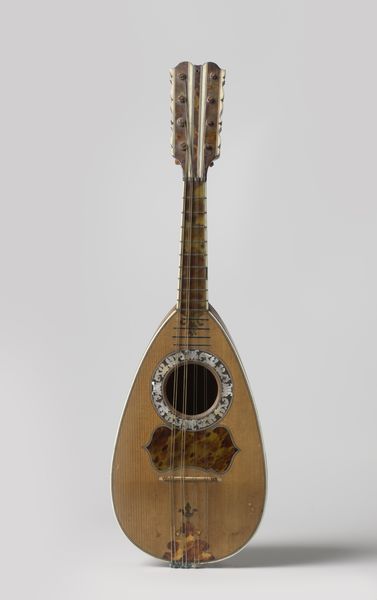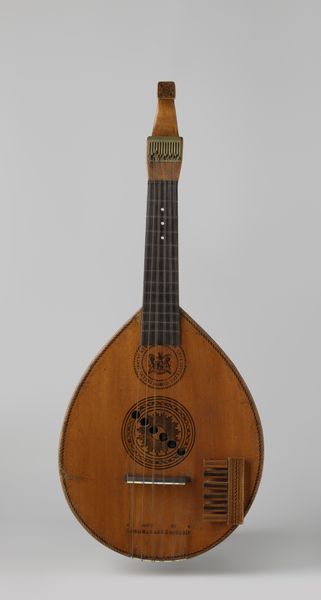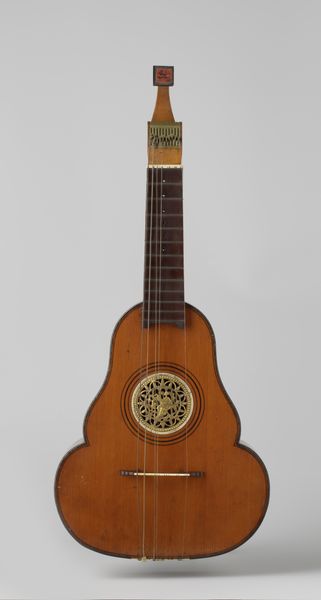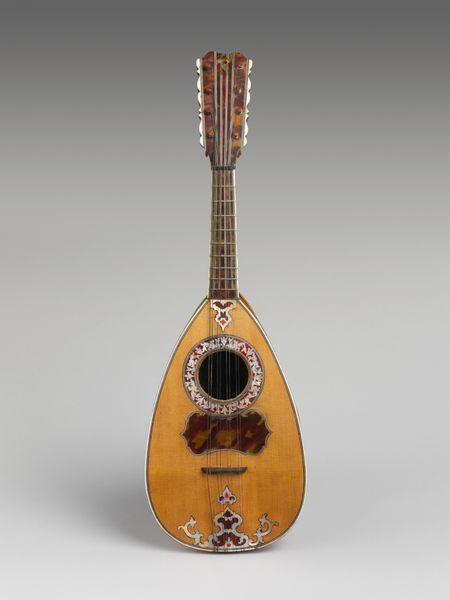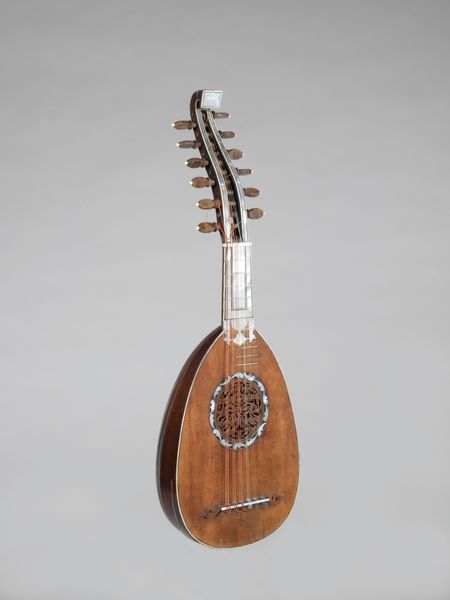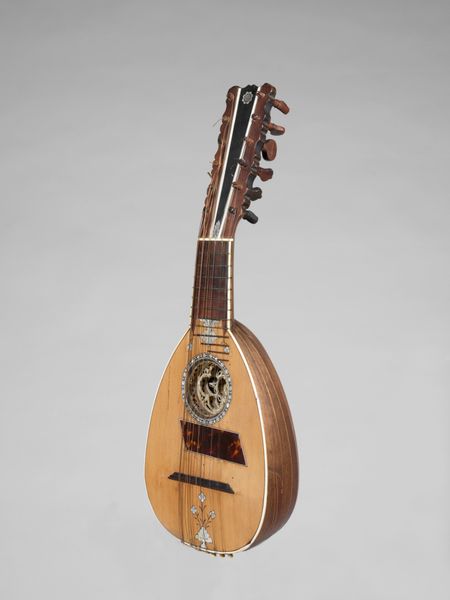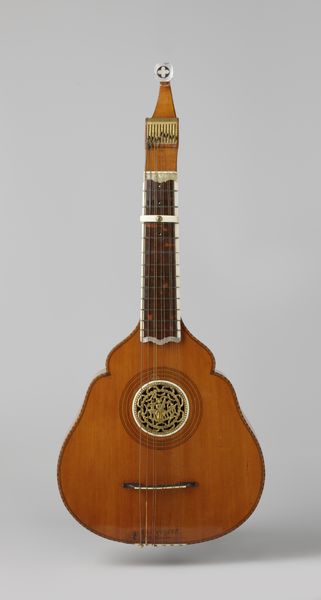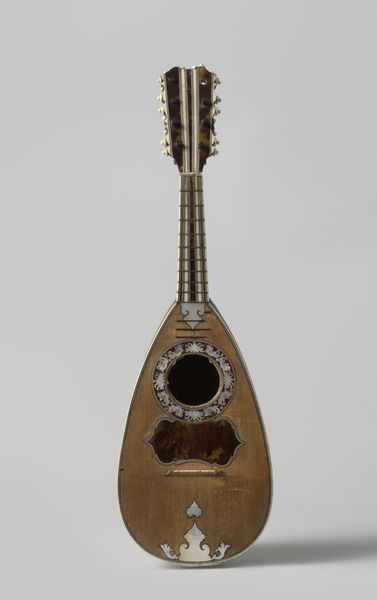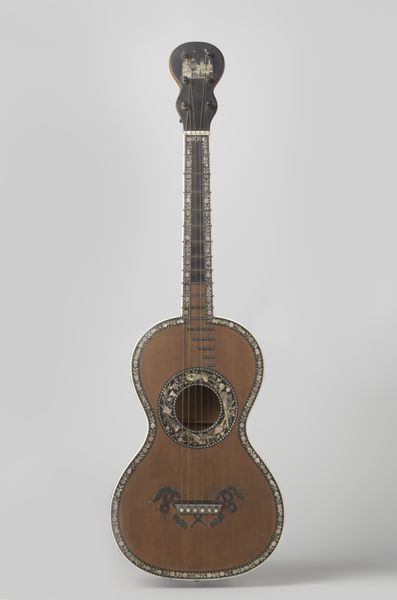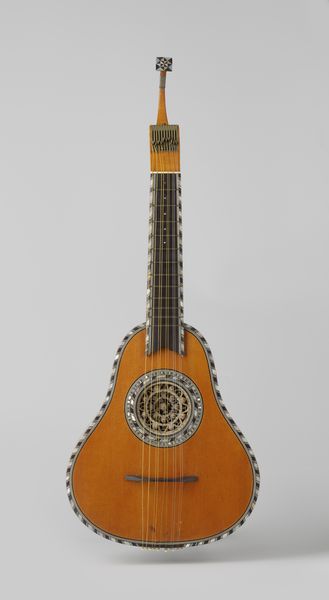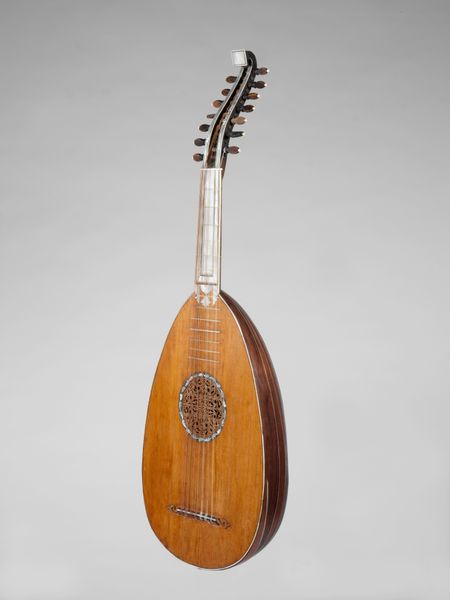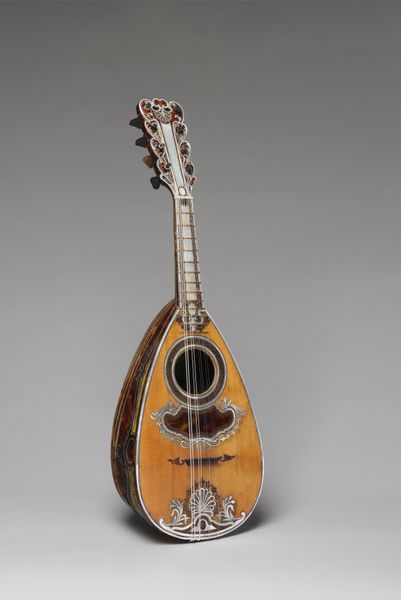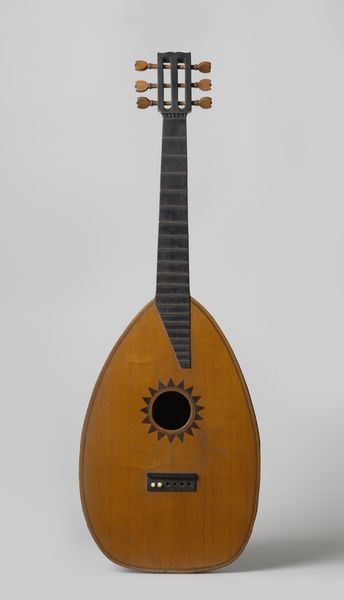
Dimensions: length 59 cm, width 16 cm, depth 12.5 cm
Copyright: Rijks Museum: Open Domain
Curator: Take a look at this exquisite Neapolitan mandolin, crafted by the Vinaccia family sometime between 1770 and 1780. The blend of wood and metal creates such visual warmth. What's your initial impression? Editor: It strikes me as a relic of its time, imbued with a sense of social stratification and the politics of entertainment under monarchy. Curator: Indeed. The mandolin carries quite a lot of historical weight. Its ornate decorations evoke the visual vocabulary of the Baroque style. Notice how symbols associated with refinement signal wealth and status in its target audiences? Editor: Right, these sorts of handcrafted objects often served as signifiers. The ruling class appropriating culture, displaying and commissioning art like this to reinforce existing hierarchies. A token of courtly love and dalliance. Curator: And a token also of aspiration, don't you think? The mandolin symbolized refined leisure, yes, but also perhaps offered the rising bourgeois a way to align themselves with courtly aesthetics and values. Think about the musical performances in those aristocratic salons. The resonances must have had profound psychological effects in cementing such aspirations. Editor: I hear you. What I can't stop thinking about is access. While this object may have offered symbolic capital for some, it certainly wasn't available to all. For women, performance of such an instrument may have been both an expressive outlet and yet also limited their role as something fundamentally decorative or docile. Curator: That’s an important layer to consider. It's not just about aesthetics. Instruments like this become symbols within much wider societal performances. So much context informs what sounds and symbols can mean over the centuries. Editor: Absolutely. When we look at decorative art objects like this Neapolitan mandolin, we must view its symbolism critically and consider the structures of power and privilege in its wake. Curator: It truly goes beyond its musical capability; it invites us to engage with art history more holistically, making us aware of how social inequalities from the past are still visible today. Editor: It really does, I’ll carry those echoes with me, pondering these power dynamics long after our tour ends.
Comments
rijksmuseum about 2 years ago
⋮
This type of mandolin was invented in Naples in the mid-18th century. Its strings are grouped in four pairs and tuned in fifths to the same pitches as the violin. In addition, its fingerboard is fretted to facilitate intonation, which made the mandolin easier to play than the violin and particularly successful among amateur performers.
Join the conversation
Join millions of artists and users on Artera today and experience the ultimate creative platform.
